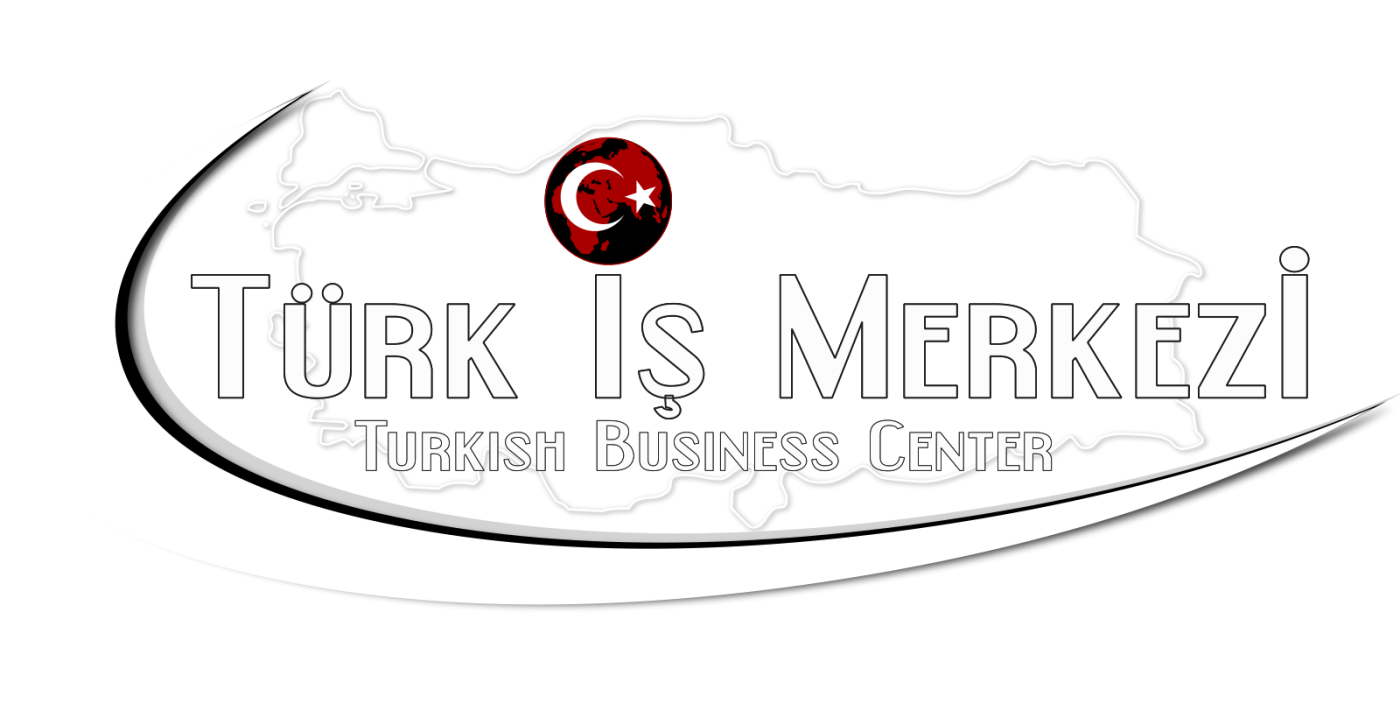About Turkey
With its unique position at the crossroads of Europe and Asia, Turkey has played a pivotal part in the world’s history. The country has acted as a barrier and a bridge between two continents, and became a focal part of a trade route which not only brought prosperity to the country, but laid the groundwork for the rich cultural mix that exists in the country today.
At the Crossroads of Europe and Asia
Turkey is bordered by eight countries: Armenia, Iran, Azerbaijan in the east; by Georgia in the northeast, by Bulgaria and Greece in the northwest, and by Iraq, and Syria. Over the centuries, there have been various struggles, conquests, and changes of power, which have all shaped the nation into its current setting as a gateway between the Middle East, Asia, and Europe.
Turkish Culture
Turkish culture has undergone a huge shift in the last 100 years. Before 1923, the Ottoman Empire was a multi-ethnic state. However, it was segregated, and ethnic and religious groups did not mix with each other, retaining their own separate identities. That changed with the birth of the Turkish Republic, however, as the country began to look towards an approach that integrated its diverse cultures to produce one national identity.
Today, Turkey is a modern country with a diverse group of intertwined cultures including Muslims, Jews, Greeks, Armenians and Syrians. There’s also a strong divide between rural and cosmopolitan living, with Turks in the countryside adopting a more conservative way of life, while city-dwelling Turks look to a more modern way of life.
Turkey is home to some 80 million citizens. Three quarters of the population is of Turkish ancestry, primarily progressive Muslims. Turkey is also home to a large population of Muslim Kurds, comprising roughly 18% of the population of Turkey. In the last few years, Turkey has also become home to a high number of Syrian refugees, and around 3.5 million are thought to live in the country.
Turkey’s population is overwhelming youthful, and upwardly mobile. Young professionals are moving to the cities in greater numbers, changing the face of Turkey’s urban centres, and driving its economy.
Turkish History
Before Turkey became a republic, the land was ruled by the Ottoman Empire. The Ottoman state was formed in 1299 with the uniting of a number of Turkish tribes. However, it wasn’t until the conquest of Constantinople in 1453 that the Ottoman state truly became an empire. From that point, until 1683, the Ottoman Empire continued to grow, through a series of conquests and invasions of other territories and tribes. During the peak of the Ottoman Empire’s control of the region, the empire ruled over a population of more than 15,000,000.
The mighty empire began to crumble in the 18th century, as a series of wars took their toll on the Ottomans, who battled on many fronts and with many of its territories.
By World War I, the sun had set on the Ottomans, and 1923 saw the birth of the Republic of Turkey. One of the founders of this new movement was Mustafa Kemal Ataturk. Ataturk was an Ottoman and Turkish army officer who led the Turkish National Movement during the Turkish War of Independence.
After his victory, Ataturk began transitioning the Ottoman Empire into a European Nation-State. He oversaw the opening of new schools, began government reform programs, and lowered taxes. The emergence of this new type of government in Turkey was the start of its growth into a modernised European nation.
A section with a background video
Lorem ipsum dolor sit amet, consectetuer adipiscing elit, sed diam nonummy nibh euismod tincidunt ut laoreet dolore magna aliquam erat volutpat….
Politics in Turkey
In July 2018, Turkey abolished its 95-year-old parliamentary system for one that concentrated all the political power in the office of the presidency. President Recep Tayyip Erdogan, who was inaugurated for a second term at the same date, has radically reshaped a host of laws, regulations and institutions.
The President has the power to directly appoint ministers, many judges and bureaucrats, and one or more vice presidents – taking the place of an elected vice president. Erdogan will also set out the national budget.
While it sounds as if the president has ultimate power, Turkey’s Parliament still holds clout. They have the authority to overturn presidential decrees, and the president cannot overturn by decree legislation that was passed by Parliament. Also, cannot issue decrees in areas that the constitution specifically reserves for parliamentary legislation. This includes criminal penalties, declarations of war, or permission for foreign troops to enter Turkish territory
Turkey’s Geography
Turkey is more than just beaches. The country is home to a diverse and rich collection of landscapes. Surrounded by three seas, Turkey has some 8000 kilometres of coastline. The country is divided into seven geographical regions: the Aegean, Central Anatolia, Eastern Anatolia, Southeastern Anatolia, Black Sea, Marmara, and the Mediterranean region. The largest land area of Turkey is Anatolia, which connects Turkey to Asia. Most of Anatolia is comprised of narrow coastal plains and high plateaus. In the east, most of the land is mountainous and connected to major river systems.
- Total Area: 783,562 square km
- Climate: Dry and hot summers and mild winters
- Highest Point: Mount Ararat 5,166 m
- Lowest Point: Mediterranean Sea 0 m
These different regions also have varied climates, a feature unique to Turkey. Along the coast of the Mediterranean and Aegean Seas, the climate is hot and dry during the summer and cool and wet during the winter. The coastal regions that lay along the Black Sea tend to be cooler and wetter in the summer than other coastal parts of Turkey.
In inland, elevated areas, snow falls during winter months, which has given rise to Turkey’s ski industry, with ski fields even accessible from Turkey’s Mediterranean coastline.
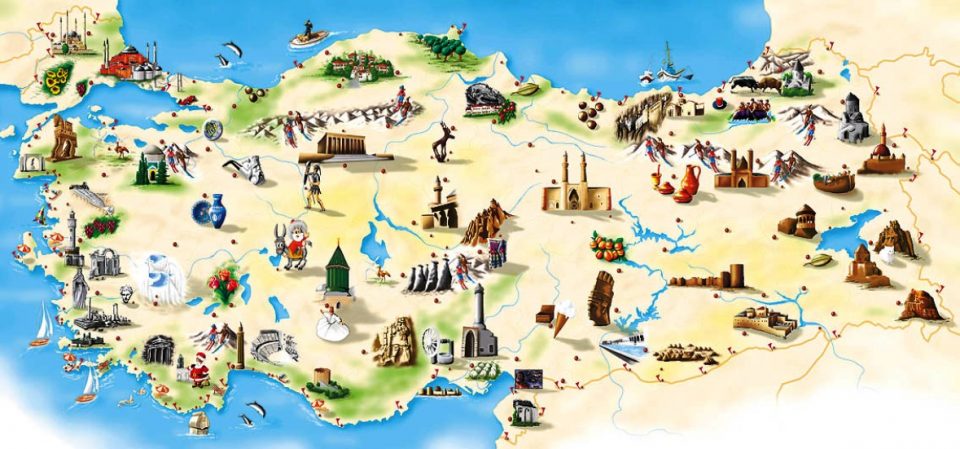
COMING SOON
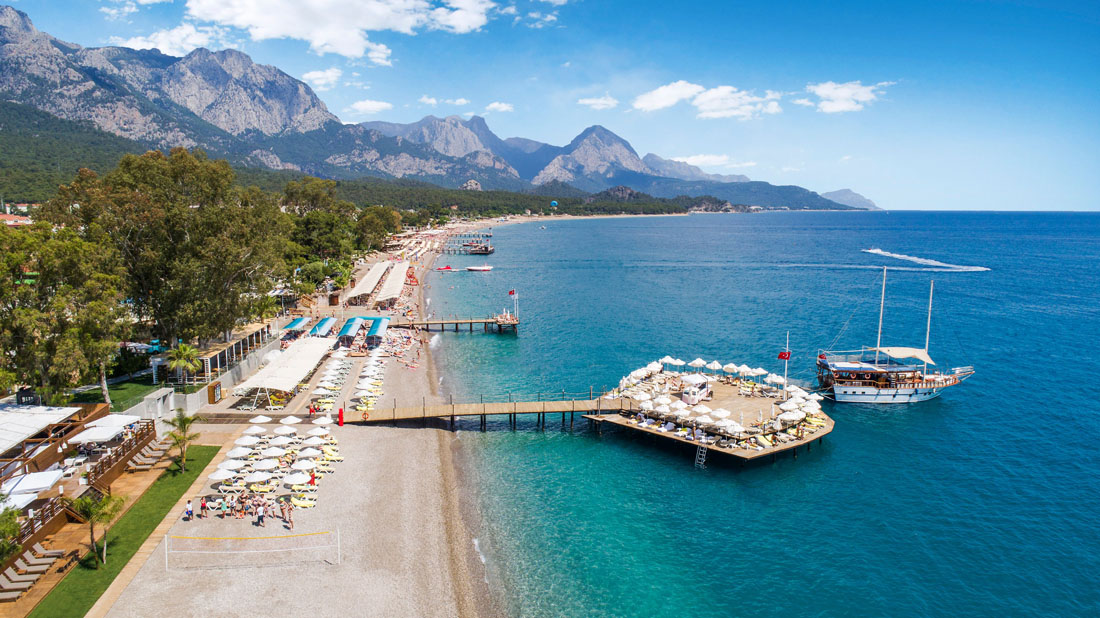
Turkish Mediterranean Region
Turkey’s Mediterranean region is located in the south of Turkey. It’s easy to understand why overseas home buyers and tourists are flocking to the Turkish Mediterranean coast, with its combination of stunning landscape and perfect Mediterranean weather. Let’s take a look at some of the highlights of this beautiful region.
Main cities along the Turkish Mediterranean region
The main provinces in this region are Adana province, Antalya province, Burdur Province, Hatay Province, Isparta Province, Kahramanmaras Province, Mersin Province, and the Osmaniye Province.
The Mediterranean region of Turkey is a coastal area, but it is also bound by a mountainous region. The coastal region is a strip of land squeezed between the Mediterranean Sea and coniferous Taurus Mountains in the west. Another mountain chain, the Amonos Mountains, runs from north to south in the far east of this region.
Read MoreTurkish Aegean Region
The Aegean region is one of the seven regions found in Turkey. It is situated in the western part of Turkey. The Aegean Sea is to this region’s west, Marmara region is to the North, The Mediterranean region is to the South and Southeast and the Central Anatolia regions are located to the East. The region includes 8 provinces and over nine million people.
The Aegean region is similar to the Mediterranean region in climate but there are differences in the landscape. Unlike the more typical parallel mountains found along the Med, Aegean mountains often cut directly into the sea. This of course causes differences in landscape and beaches. The perpendicular mountain ranges create coastline bays and coves as opposed to the exposed Mediterranean coastline. The Aegean is superb for keen sailors and boaters, whereas the Mediterranean is ideal for beach combers.
The Aegean Coast is breathtaking as well as rich in Agriculture and history. You can adventure through many ancient ruins that are decaying remnants of history telling of the region’s past while also enjoying modern amenities.
Read More
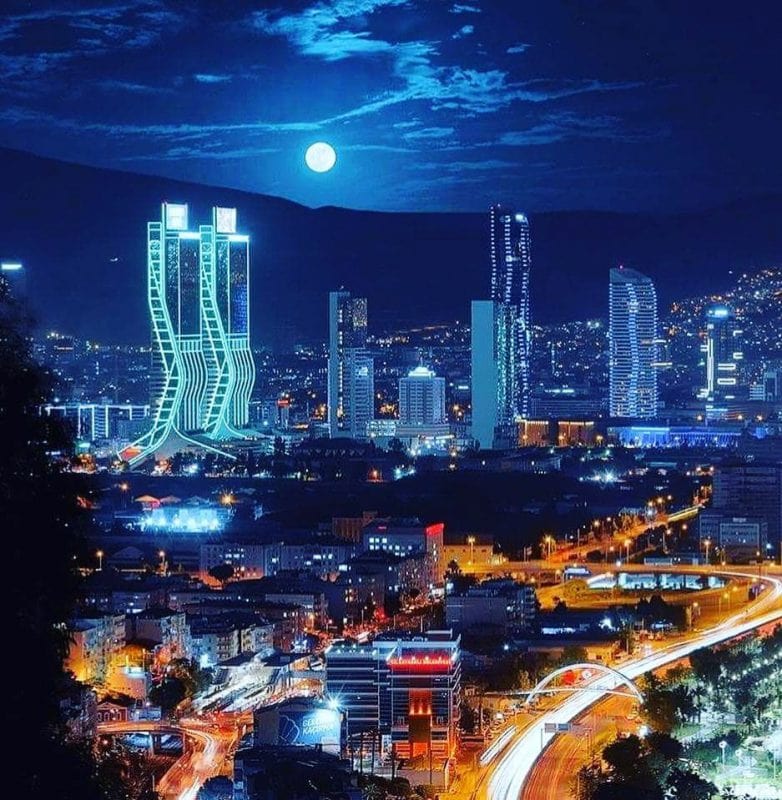
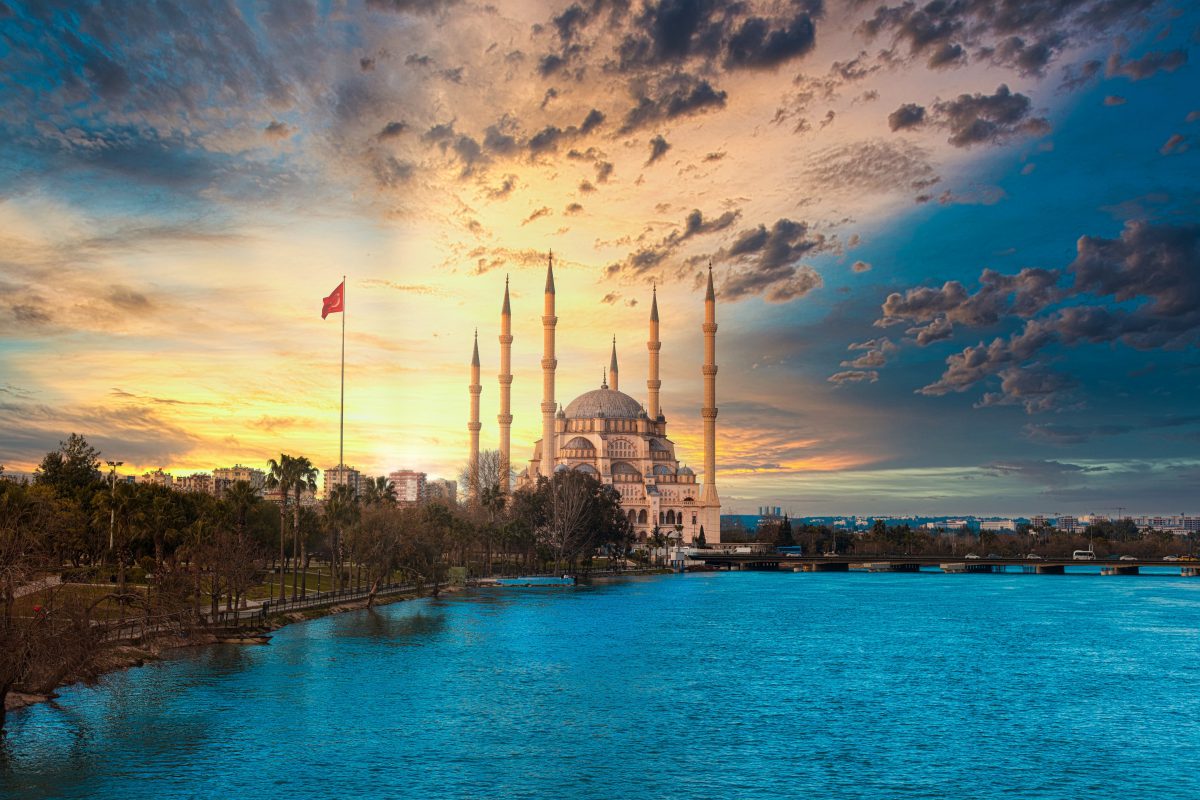
Marmara Region
About Istanbul – When we delve into the finer details about Istanbul, one thing is clear. It has a pulse, unlike any other city. Albeit no longer Turkey’s capital, it’s all-encompassing as the financial, cultural, touristic, business, education and economic heart of the country. Home to the famous Bosphorus waterway, and once known as Constantinople or Byzantium, you can’t help appreciate the city’s fascinating diversity.
Istanbul’s history spans many centuries. Until 1923 when the Republic of Turkey was proclaimed, Istanbul had been the capital city of the Roman, Byzantine and Ottoman empires, each leaving their distinct mark. Exploring the mosques, traditional restaurants, bazaars, shops and famous sites leaves you with a sense of wonder, so much so that many foreigners have decided that a visit is simply not enough, they choose to call Istanbul their home.
Read MoreBlack Sea Region
Trabzon is one of the largest cities that lies on the Eastern Black Sea shores of Turkey, backed by the Pontic Mountains which separate Trabzon from the central Anatolian Plateau. Covering over 1900 square miles with a population of over 750,000, Trabzon enjoys a far cooler climate than the Mediterranean or the more tourist destinations in Turkey. This coupled with the rainfall sees the area boast lush green forests set amidst stunning mountains and incorporates a number of rivers and highland areas.
Trabzon benefits from some exceptional transportation links which include a modern major road network making it really easy to travel in and out of the area. There is the International airport which makes air travel simple and a huge harbour that caters for all types of international shipping traffic.
Read More
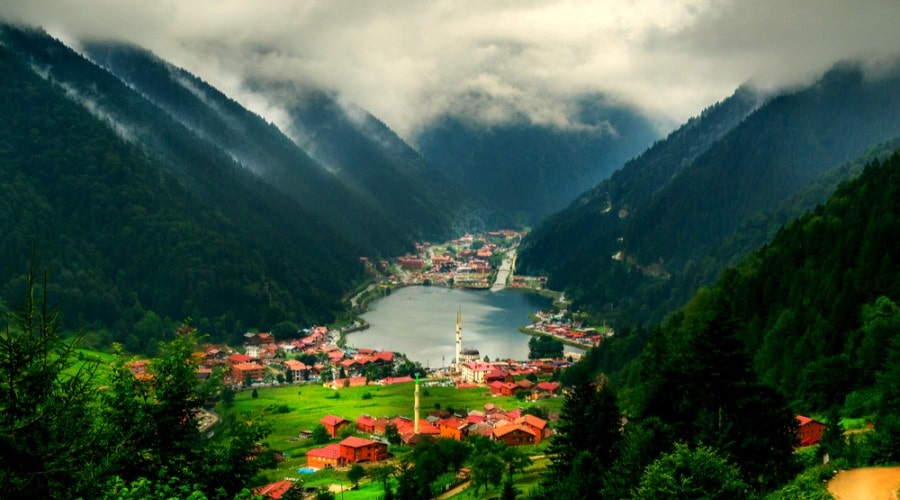
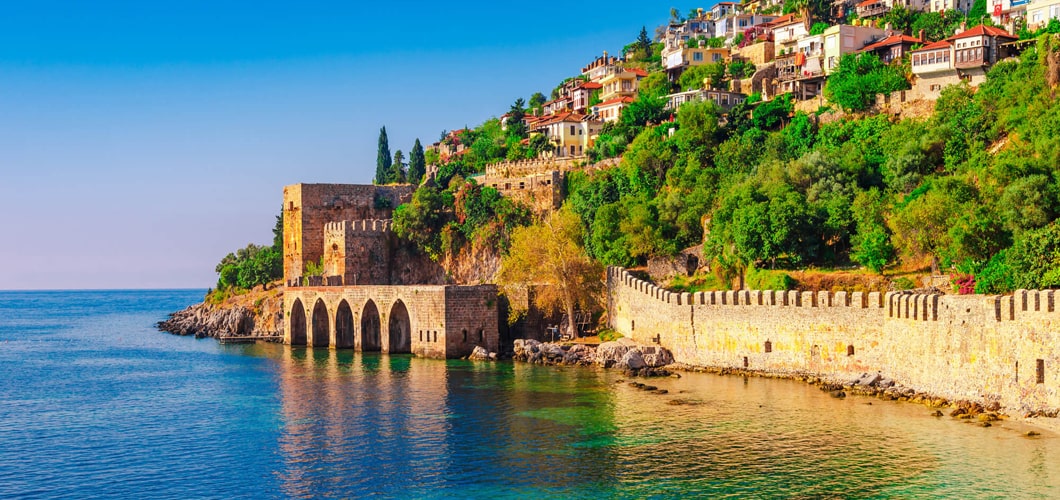
About Lycian way (Lycian coast) Turkey
Any visitor to Turkey’s southern regions will quickly learn to recognise the name “Lycia”. Ruins from the ancient civilisation are scattered in the country’s coastal areas, and visitors are often surprised at not only the well preserved remains but the fact that they’re so accessible.
Where was Lycia?
Lycia was a geopolitical region in what is now Antalya and Mugla, on Turkey’s south coast. References to Lycia have been found in records of ancient Egypt as well as the Hittite Empire in the late Bronze Age. In short: this is a very old civilisation. These ancient sources make references to around 70 Lycian settlements. Most are found either by the coast or nestled into the sides of mountains. Some of them are difficult to access, which is of course a defensive measure, while the coastal port settlements were heavily fortified and defended against the marauding Lycian pirate fleets.
Read MoreAirports In Turkey
The new Istanbul Airport officially opened by President Erdogan on 29th October 2018, became operational in April 2019 taking over from the former Ataturk Airport which its flag carrier, Turkish Airlines, had outgrown.
Istanbul Airport is 50 kilometres north west of the city in Arnavutkoy, and is poised to become the biggest airport by passenger traffic in the world cementing Turkey’s position as the gateway of Europe, and providing a bridge between the East and West. It is already the world’s largest airport terminal building, similar in size to Manhattan in New York or Leicester in England. Although Hartsfield-Jackson International Airport in Atlanta is the world’s busiest airport, handling 107 million passengers a year, Istanbul Airport is expecting 90 million annual passengers, rising to a capacity of 150 million when all phases are fully completed by 2027.
Read More
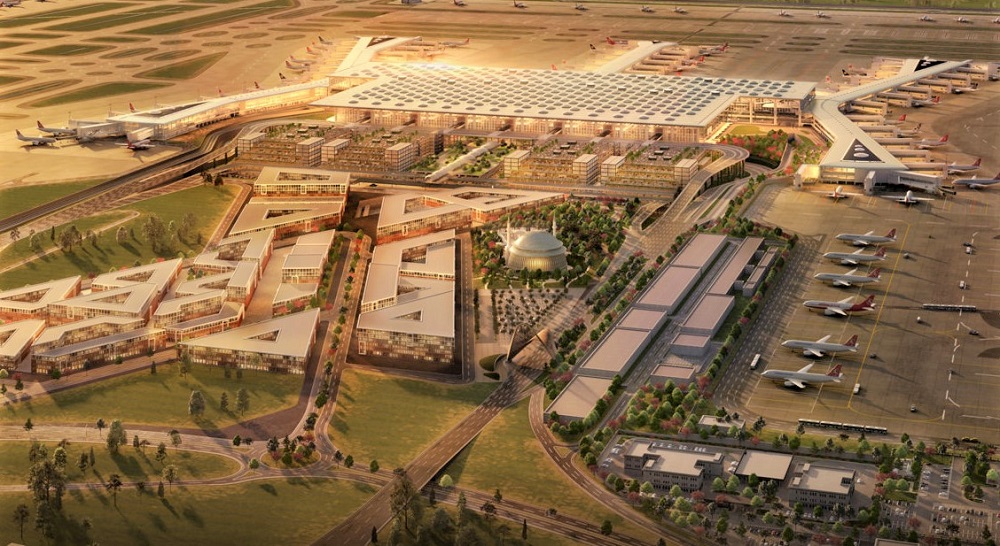
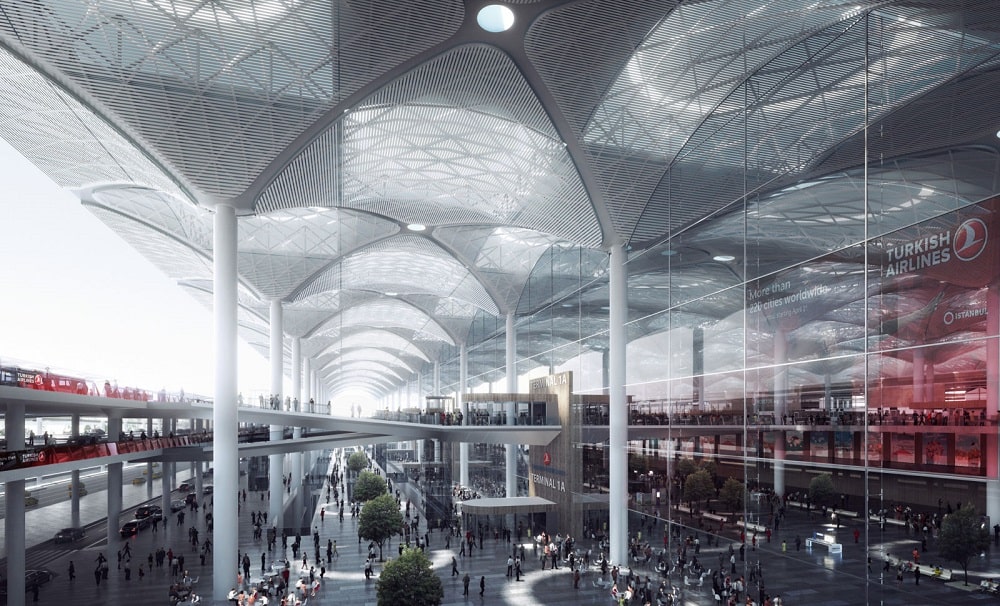
Connections at Istanbul Airport
Istanbul Airport will host more than 100 airlines flying to over 300 destinations. Turkish Airlines itself currently flies to 300 destinations in over 120 countries and in 2018 it carried more than 75 million passengers.

